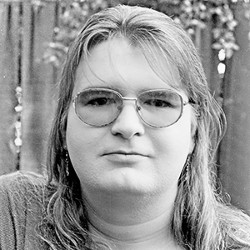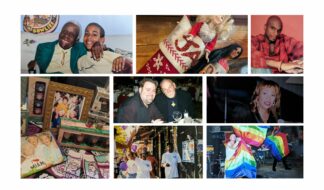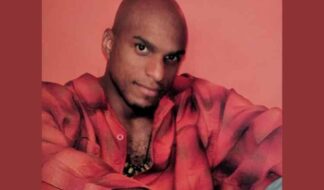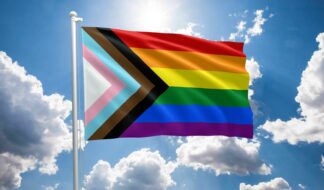by Gwendolyn Ann Smith

Roughly twenty years ago, in the mid 1990s, I was managing the first public transgender community space on the then-nascent Internet. While the service we were located on, America Online, was just them ramping up its onslaught of free hours compact disks that led to their astonishing growth by the end of that decade, our little corner of the service was all but unknown. The Transgender Community Forum existed as a subset of the larger Gay and Lesbian Community Forum, which itself was a subset of AOL's Clubs and Interests section.
In this era, the transgender community – such as it was – looked a lot different from what you know now. Most of the community was deeply closeted. If we met up, it was done in the back rooms of your local motel or some such. The notion of meeting via computer and accessing content and people across the world was still one step removed from a science fiction story.
In this place, we often dreamed of changing the world, but we were all aware of one obvious limitation: there simply were not enough of us. We were a small community on an Internet service that was limited at the time in scope, in demographics, and in users. Surely we could never make any serious gains, given how frightfully tiny our numbers were. We were sure that there were probably only a couple of thousand of us worldwide, and maybe a couple of hundred who were Internet savvy and within our tiny part of it all.
A year or two after we started this tiny forum of ours, I ended up with one of AOL's higher-ups. He had some questions for me. As it turned out AOL – in spite of its "billions of hours free" CDs – was facing issues with what they referred to as "churn rates." People would join the service, stay briefly, and go away, never to log in again. Those however, who came to our area stayed – and would log in daily, often for many hours at a time. What's more, we were seeing upwards of 20,000 unique accounts doing this over the course of a month. We were the only place with those sorts of numbers other than their hugely successful "People Connection" chat rooms.
What I learned that day was that there were a lot more of us out there than any of us knew.
Fast forward to today. The transgender community has changed as much, if not more so, as the Internet. While not everything is positive, I think it can be safely said that awareness of transgender issues and people is at an all time high.
In 2011, the Williams Institute at the University of California, Los Angeles, School of Law, published a paper by Gary J. Gates, approximating the number of people who identify as lesbian, gay, bisexual, and transgender. One of the key findings of this paper – based on survey data from several earlier papers – was that an estimated 0.3 percent of the population of the U.S. is transgender. To put this in simpler terms, the paper estimated that 697,529 Americans were transgender
Opponents of transgender rights, who wish to claim that transgender people are statistically too few to be deserving of rights, bandy that 0.3 percent figure about a lot. This has been quoted as recently as the 30th of June, as the Department of Defense lifted the ban on transgender people serving openly in the U.S. military, as members of the right-wing decried this "social experiment" on behalf of a small minority.
More than this, many on the right, as pointed out in an article by Zinnia Jones on genderanalysis.net, have tried to shave our numbers even further, claiming the number is closer to 0.03 percent of the population based on the misquoting of other right-wing figures before them.
In 2011, the U.S. population was at 311.7 million people. 0.3 percent of them – the aforementioned 697,529 people – were transgender. That is 300,000 more than the population of Oakland at that time. This is not an insignificant number of people.
At the end of June, the Williams Institute released a new paper, titled How Many Adults Identify as Transgender in the United States. Spoiler alert: our numbers have apparently doubled in the last 5 years. Based on their data, adult transgender people make up 0.58 percent of the U.S. population, with slightly higher rates of younger adults versus older.
0.58 percent of the current U.S. population is 1,397,150 people. Even at that, this only covers those who are 18 and over and who self-identify as transgender. This is a population somewhere in the range of San Diego, California or Dallas, Texas.
There are as many people who identify as transgender as there are people who have heterochromia. That's typically a difference between the iris portions of both eyes. Think of David Bowie, for example.
Now imagine what 1,397,150 people can do. It is still a small minority compared to many others, but these are the sorts of numbers that can make or break an election, that can sway businesses and advertisers, and that can be loud enough to be heard. We also know that these 1,397,150 estimated adult transgender people – and our younger members – intersect with other communities and causes. We also have allies that bolster our numbers further.
Like I learned, in the 1990s, there were a lot more of us out there than any of us knew – and what's more, our numbers may continue to grow.










